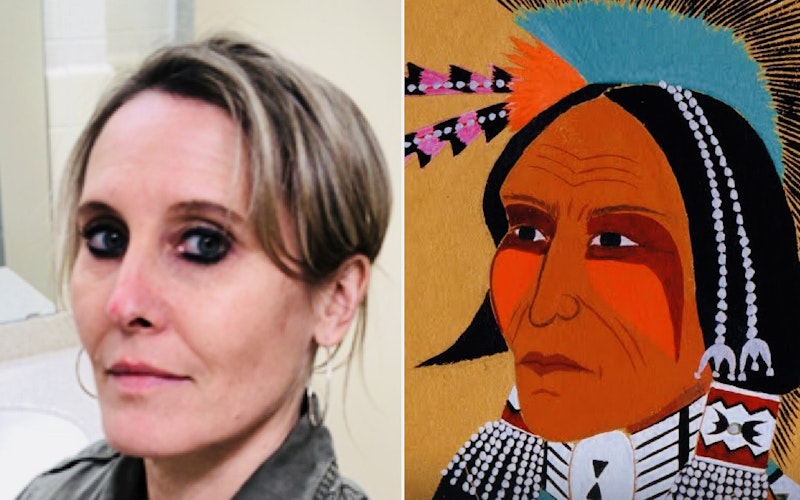
Online
Seeking the Imago Dei in Google’s Arts & Culture App
The Google Arts & Culture app has gone viral. Everyone from grandparents to celebrities have been using the “Is Your Portrait in a Museum?” feature to take a selfie and have the app match it with a prestigious painting.
What famous portrait looks most like you? Am I a work by Frida Kahlo or Paul Gauguin? (It turns, as you can see above, it's Stephen Mopope.) Canadian Prime Minister Justin Trudeau’s doppelganger is the subject of Henry Raeburn’s Ritratto. Across Canada and the United States (except in a few states where the feature is not supported), these selfie matches have popped up in thousands of social-media feeds. Why?
Who can really say why some apps (and cat videos) go viral, while others lay dormant. Certainly, though, the basic human desire to see ourselves helped fuel this one. Why are we so eager to look at our own reflections? “Let me see!” are the three words most often uttered the moment a picture is snapped. In our digital age, we strike the right pose, snap several pics, then spend significant time selecting the best image and giving it the perfect filter and hashtag. “Do I look good? Let me see, let me see what I look like.”
At first glance, it’s easy to dismiss selfies as an expression of pure narcissism. The art of a selfie can seem tantamount to self-obsession. Millennials are projected to take 25,000 selfies in their lifetime. What drives this? To be sure, narcissism plays a role, but is self-aggrandizement the only reason we snap selfies, or is there something deeper at play?
Is self-aggrandizement the only reason we snap selfies, or is there something deeper at play?
My kids recently sent some basic care items to a community in the developing world. In the package we included a mirror. It was explained to my 10-year-old daughter that in this particular community, there were children who had never seen their own reflection. She did not have a category for this information. “You mean they have never seen their own smile or eyes?” she asked. “How do they know who they are?” For her, to gaze upon one’s reflection was not the fatal flaw of Narcissus, but a basic human need, a desire to know who we are and how we are created.
Genesis tells us that we are made in the image of God. We are designed to mirror God’s moral and spiritual actions in the world. We are created with some of God’s capacity to bring justice and mercy, healing and grace. “So God created mankind in his own image, in the image of God he created them; male and female he created them.” Is our craving for the selfie in part fueled by our search for the divine? For an image of the God in whom we live and move and have our being?
A selfie gives us the chance to right a bad hair day and marvel at a trim jawline. When we post a selfie, it can mark a moment or even cause pain, as in, “Look at me, I was here having fun but you missed out.” But it’s possible we are drawn to our own image for deeper reasons, perhaps because at some level, we are searching for the divine. Who am I? What is God doing in my heart? Is there a spark of divinity in my eyes? Does this image provide a snapshot of my soul?
The Google Arts & Culture phenomenon will give way to the next app craze, but the desire to look into our own eyes will remain. While at first glance the selfie provides a new avenue for narcissism, it also offers a new way to find some of what we seek as human beings. While we’re looking to see if “our” portrait hangs in a museum, we’re also seeking a glimpse into our own souls, a hint of the image of God in our fathomless eyes.
Editor's note: Tracey's "Is Your Portrait in a Museum?" match was Apache Ben (1928) by Stephen Mopope.
Topics: Online